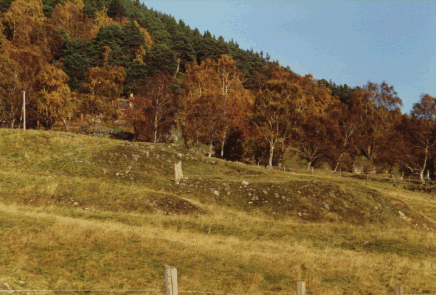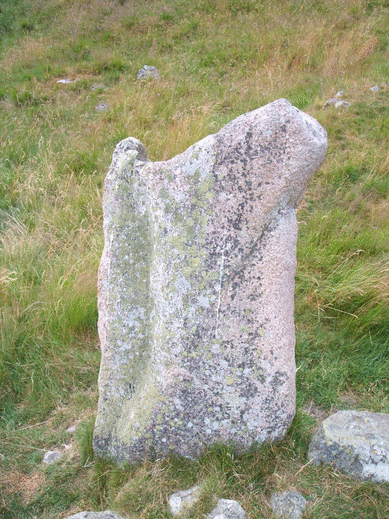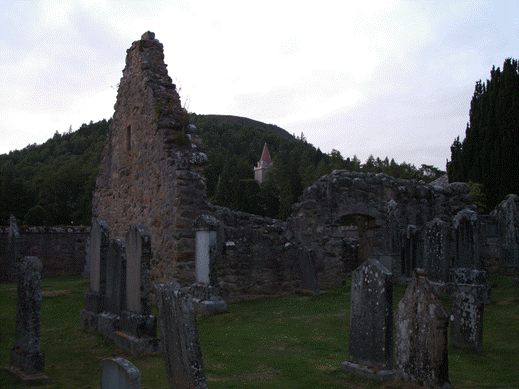St Manire
The last of the early apostles to bring the Gospel to Deeside were St Devenick and St Manire. Both were active in the valley during the 9th century but their establishments were widely separated.
St Manire (sometimes spelled Monire, Miniar or Niniar) is said to have been one of Drostan's successors as ab at Deer, and to have had a foundation in that district near Aberdour. But St Manire's main sphere of activity was on upper Deeside, in the district of Crathie, near where he established his muinntir.
The actual site of Manire's early community is at Rinabaich, a knoll to the north of the present North Deeside Road. This is one of the most ancient Christian sites on Deeside. All that remains, as is shown in the photograph on the right, is a slightly flattened area just to the north of the main Aberdeen-Braemar road

Above: The very ancient site of St Manire's muinntir at Rinabaich.
There was a considerable township at Rinabaich
A tantalising discovery was made near the chapel/burial ground site - what is known as the "Micras Brooch". It has been described as a "silver brooch, 25mm. in diameter, dating from the 13-14th century. It is a talismanic flat-ring brooch inscribed +IHESVS NAZA." A local minister, Rev. J. Stirton, donated it to the National Museum of Scotland in 1935 and I have confirmed with the museum that it is still in their collections.1
The medieval church site at Creythin, or Crathie

Above: The standing stone at Rinabaich.

Above: The remains of the medieval church of St Manire at Crathie
with the 'new' parish church framed in the background.
References:
1. Personal communication from Dr Adrian Maldonado, Glenmorangie Research Fellow at the NMS (Edinburgh), 24 May 2019. https://www.nms.ac.uk/explore-our-collections/collection-search-results/?item_id=20327
small(transp).png)
